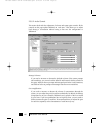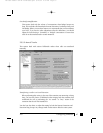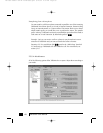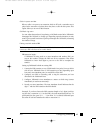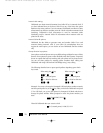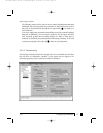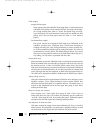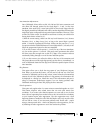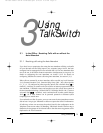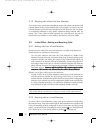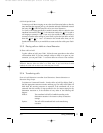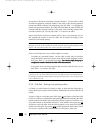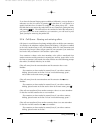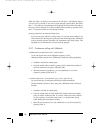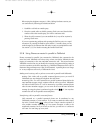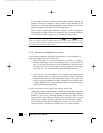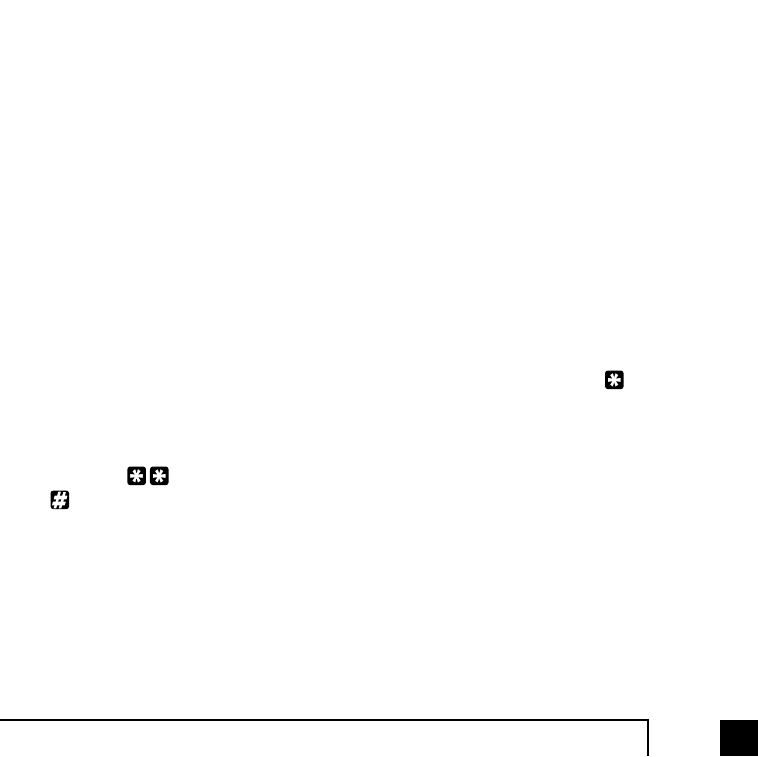
753.0 Using TalkSwitch
3
Using
TalkSwitch
3.1 In the Office - Receiving Calls with or without the
Auto Attendant
3.1.1 Receiving calls using the Auto Attendant
If you don’t have a receptionist, then using the Auto Attendant will help you handle
all your inbound calls and help improve your corporate image. Once it has been
configured and its messages have been recorded, that's it! The Auto Attendant takes
care of the rest. It will follow whatever instructions (configuration) it was given. For
details on configuring the Auto Attendants, see section 2.3.2.2. For details on
configuring TalkSwitch to answer calls using Auto Attendants, see section 2.3.2.3.
When calls are answered by an Auto Attendant, callers can dial any Local Extension
(1xx), Remote Extension (2xx), Extension Ring Group (300 - 309), choose options
0, 1, 2, 3, 4, 5 if configured to perform specific actions, dial voicemail direct ( +
mailbox), send faxes, or remain on the line to follow an action programmed for that
Auto Attendant. TalkSwitch owners and employees can also access other options at
the Auto Attendant including Call Back (dial 6), Call Bridge (dial 80 - 88, 9), retrieve
voicemail (dial + mailbox), enter command mode to make system changes
(dial ). All of these features can be password protected to eliminate system
tampering from outside users.
If you subscribe to Caller ID service, you may want to set the Auto Attendant to answer
after at least 1 ring to give TalkSwitch a chance to capture the Caller ID information.
All calls ring at least one more time than what’s listed for the configuration in the
Telephone Lines section under Call Handling. TalkSwitch ‘absorbs’ this first ring to
determine the ring pattern of the inbound calls so that this same ring pattern can be
duplicated to the Local Extensions.
TS-user manual 7th ED v3 Release.qxd 8/27/02 4:57 PM Page 75



